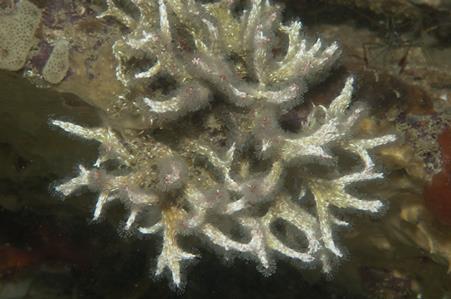General Description
Members of this genus build an open aggregation of numerous smooth tiny branching tubes that form a lace-like irregular network over the substrate. An operculum is absent, as is a radiolar membrane. Currently only a single species in southern Australia, Salmacina australis, is recognised with these characters. Tubes up to about 5 cm long, diameter 1 mm or less.
Biology
Salmacina species are able to reproduce asexually, by budding off new individuals.
Habitat
Hard surfaces such as ship hulls and rocky substrates, intertidal to continental shelf depths
Reefs
Coastal shores
Distribution guide
Northern and southern Australia.
Species Group
Depth
Shore (0-1 m)
Shallow (1-30 m)
Deep ( > 30 m)
Water Column
Max Size
5 cm
Diet
Organic matter
Commercial Species
No
Global Dispersal
Recorded in Australia
Species Code
MoV 3375
Identify
Conservation Status
- DSE Advisory List : Not listed
- EPBC Act 1999 : Not listed
- IUCN Red List : Not listed





